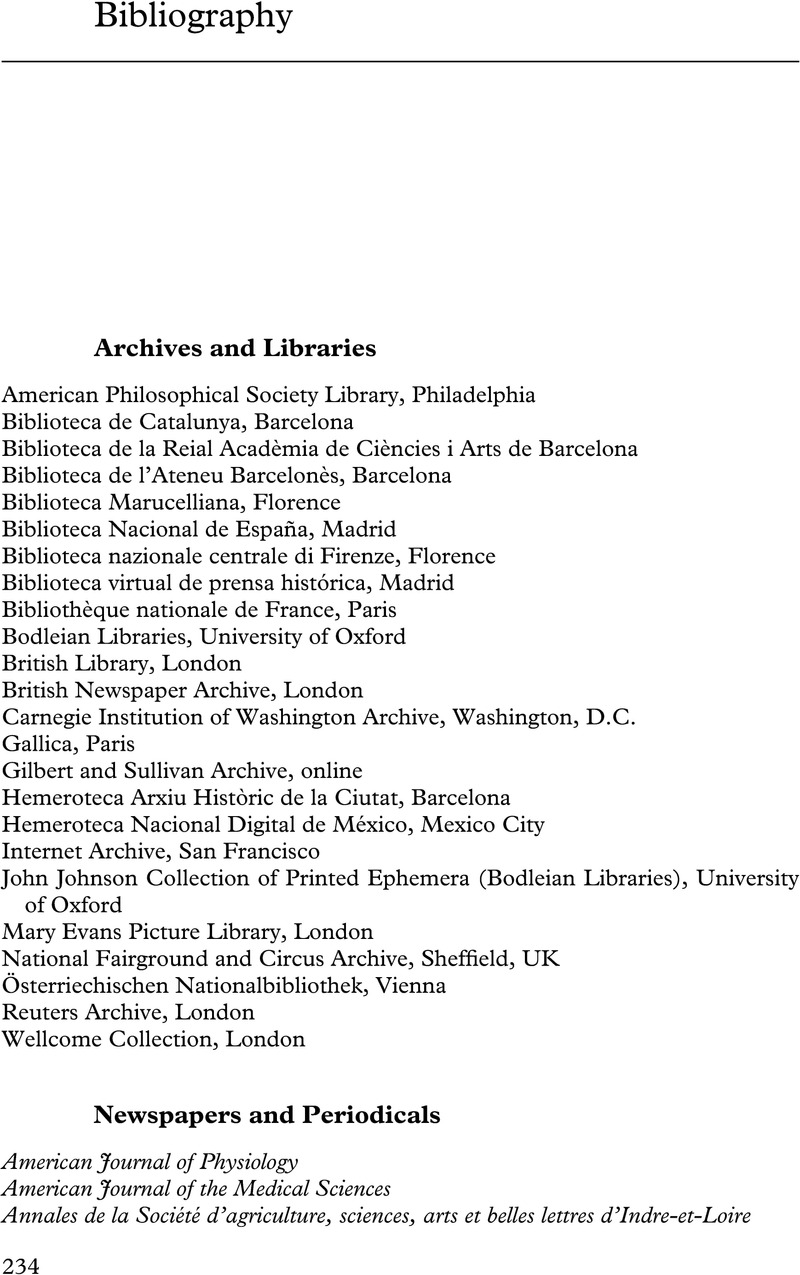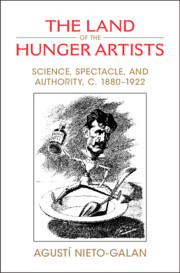Bibliography
Published online by Cambridge University Press: 09 November 2023
Summary

- Type
- Chapter
- Information
- The Land of the Hunger ArtistsScience, Spectacle and Authority, c.1880–1922, pp. 234 - 250Publisher: Cambridge University PressPrint publication year: 2023



